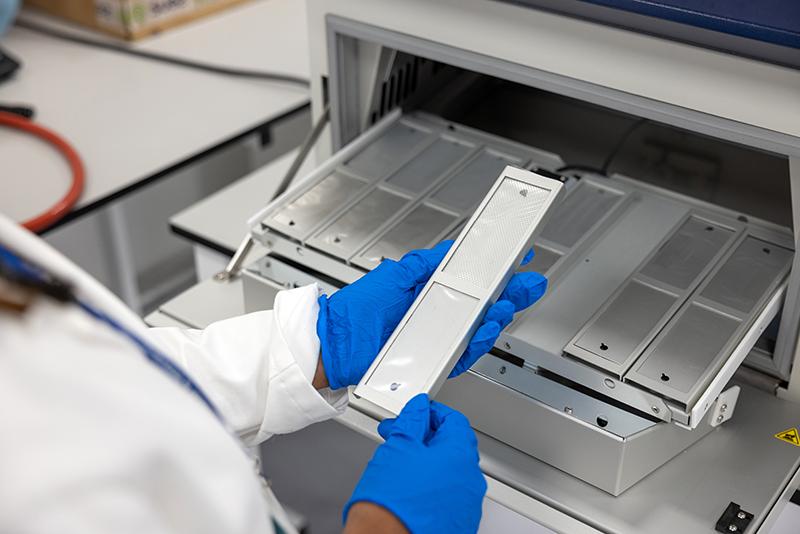Twinning with a biodegradable and recyclable plastic film
A biotransformation technology that makes a polyethylene film biodegrade within a year also renders the material recyclable, claim scientists at Polymateria, a start-up based at Imperial College London, UK.

They say this is the first time such a film has been independently proven both recyclable and biodegradable in the natural environment. The recyclability testing has been conducted by the ISO-accredited Impact Solutions in the UK.
Polymateria has also developed a rigid plastic material for products such as disposable drinks cups, which also biodegrades and is in the final phases of testing for recyclability.
Explaining how the technology works, Steven Altmann-Richer, the company’s Global Head of Public Affairs and Regulatory Strategy, says, ‘Packaging manufacturers can add the ‘drop-in’ Polymateria additive – which comes in pellet form – to their plastic resin during the manufacturing process. This additive is known in the industry as a masterbatch, and it contains chemicals (we call them catalysts and cocatalysts).
‘After a period specified by the manufacturer, the dormancy…ends and the catalysts in the masterbatch break down the hard crystalline and amorphous structure into a wax-like substance through multiple chemical reactions, achieving carbon-carbon bond scission and ensuring no microplastics are created.’
The proprietary use of ‘synthetic’ prebiotics attracts natural decay agents such as microbes, fungi and bacteria to fully consume the wax-like substance.
Recycling, however, can take place before biodegradation is triggered, with a ‘recycle by’ date alerting consumers and encouraging responsible disposal.
On a range of packaging – polyethylene and polypropylene – independent third-party laboratory testing shows 100% biodegradation on a rigid plastic container in 336 days and film material in 266 days in the open environment. The process is said to leave zero microplastics behind.
‘Our product stewardship ensures we only work with pure materials capable of full and safe return to nature but also don’t damage the waste hierarchy of reduce, reuse and recycle,’ Altmann-Richer adds.
‘We’ve deployed the technology in polyolefins first as polyolefins are the type of plastic most commonly found in the natural environment. This is where we’ve focused all of our innovation efforts to date. We wanted to figure out how you could return polyolefins to nature, but equally make the solution time-controlled to give recycling every chance to happen.’ The film can be recycled and turned into products like flowerpots or pallets.
Polymateria’s technology works with a wide range of product types such as clear plastic containers, bottles lids, supermarket bags, fruit nets, candy wrappers, cigarette film, face masks and more.
Altmann-Richer notes, ‘Polymateria has [also] supported the development of new standards for polymer analysis, eco-toxicity and biodegradability testing. We have worked alongside a diverse steering group of technical specialists, including those from Imperial College London, Avient and the UK Government, to help framework these standards, informed by Polymateria’s own strict internal criteria.
‘This has led to the development of a new British standard for biodegradable plastic. The new BSI PAS 9017 addresses a significant gap in the plastics landscape to ensure claims about biodegradability can be independently verified without causing any harm to the environment.
‘The standard is a test specification with strict pass/fail criteria to measure the biodegradability of a polyolefin plastic in the open environment without creating microplastics or causing ecotoxicity issues… Any product deploying our technology must meet the strict criteria set out in the PAS 9017 standard to ensure no microplastics are created, no harmful substances are left behind and full biodegradation occurs.’







